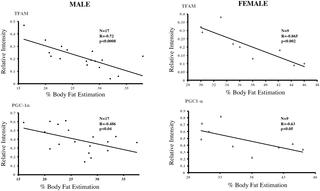PLOS ONE ( IF 3.7 ) Pub Date : 2018-03-19 , DOI: 10.1371/journal.pone.0194269 Diana Vargas , Carolina López , Edward Acero , Edgar Benitez , Angélica Wintaco , Jaime Camacho , Marisol Carreño , Juan Umaña , Daniela Jimenez , Said Díaz , Fernando Lizcano

|
The anatomical location of adipose tissue might have direct implications for its functionality and risk of cardiovascular disease. Adipose tissue surrounding blood vessels may be thermogenically more active in specific areas of the body, releasing substances that regulate vascular metabolism. In humans, the phenotypic characteristics of adipose tissue surrounding the aorta and the cardiovascular disease risk that it might entail remain largely unknown. Here, we compared thermogenesis-related molecular features of human periaortic adipose tissue samples with those of subcutaneous adipose tissue, obtained by sternotomy from 42 patients undergoing cardiovascular surgery. To determine the expression of genes related to energy expenditure and the levels of some adipokines, histological examinations, quantitative PCR, and protein expression measurements in adipocyte precursor cells were performed. Periaortic adipocytes were smaller than those from subcutaneous tissue. Moreover, weight gain induced periaortic adipocyte hypertrophy (r = -0.91, p<0.01). Compared to subcutaneous tissue, adiponectin, FABP4, IL-4 and IL-6 was decreased in periaortic adipocytes, whereas FGF21, UCP-1, PGC-1a, CITED1, Omentin and TFAM (Mitochondrial protein) increased. Upon analyzing patients’ clinical conditions, it emerged that the levels of PGC-1a both in male (r = -0.48 p<0.04) and female (r = -0.61, p<0.05) and TFAM in male (r = -0.72, p<0.0008) and female (r = -0.86, p<0.002) decreased significantly with progressive weight gain. However, no differences were observed in patients with diabetes mellitus 2 or Hyperlipidemia. Adipocytes surrounding the ascending aorta present markers of major thermogenic activity than those in subcutaneous tissue. Nevertheless, this characteristic might change, due to unfavorable metabolic conditions such as obesity, which is a risk factor for cardiovascular disease.
中文翻译:

人腹主动脉脂肪组织的生热能力通过体重转化
脂肪组织的解剖位置可能对其功能和心血管疾病的风险有直接影响。血管周围的脂肪组织在人体的特定区域可能具有更强的热活性,释放出调节血管代谢的物质。在人类中,主动脉周围的脂肪组织的表型特征以及可能引起的心血管疾病的风险仍然未知。在这里,我们比较了从42名接受心血管外科手术的患者通过胸骨切开术获得的人腹膜周围脂肪组织样本与皮下脂肪组织样本与生热相关的分子特征。要确定与能量消耗和某些脂肪因子水平相关的基因表达,组织学检查,定量PCR,在脂肪细胞前体细胞中进行蛋白质表达测量。腹主动脉脂肪细胞小于皮下组织的脂肪细胞。此外,体重增加引起腹膜周脂肪细胞肥大(r = -0.91,p <0.01)。与皮下组织相比,腹主动脉脂肪细胞中脂联素,FABP4,IL-4和IL-6减少,而FGF21,UCP-1,PGC-1a,CITED1,Omentin和TFAM(线粒体蛋白)增加。通过分析患者的临床状况,发现男性(r = -0.48 p <0.04)和女性(r = -0.61,p <0.05)的PGC-1a和男性(r = -0.72, p <0.0008)和女性(r = -0.86,p <0.002)随着体重的逐步增加而显着下降。然而,在患有糖尿病2或高脂血症的患者中未观察到差异。与皮下组织相比,升主动脉周围的脂肪细胞具有主要的生热活性标记。但是,由于不利的代谢状况(例如肥胖症)是心血管疾病的危险因素,该特征可能会改变。

























 京公网安备 11010802027423号
京公网安备 11010802027423号